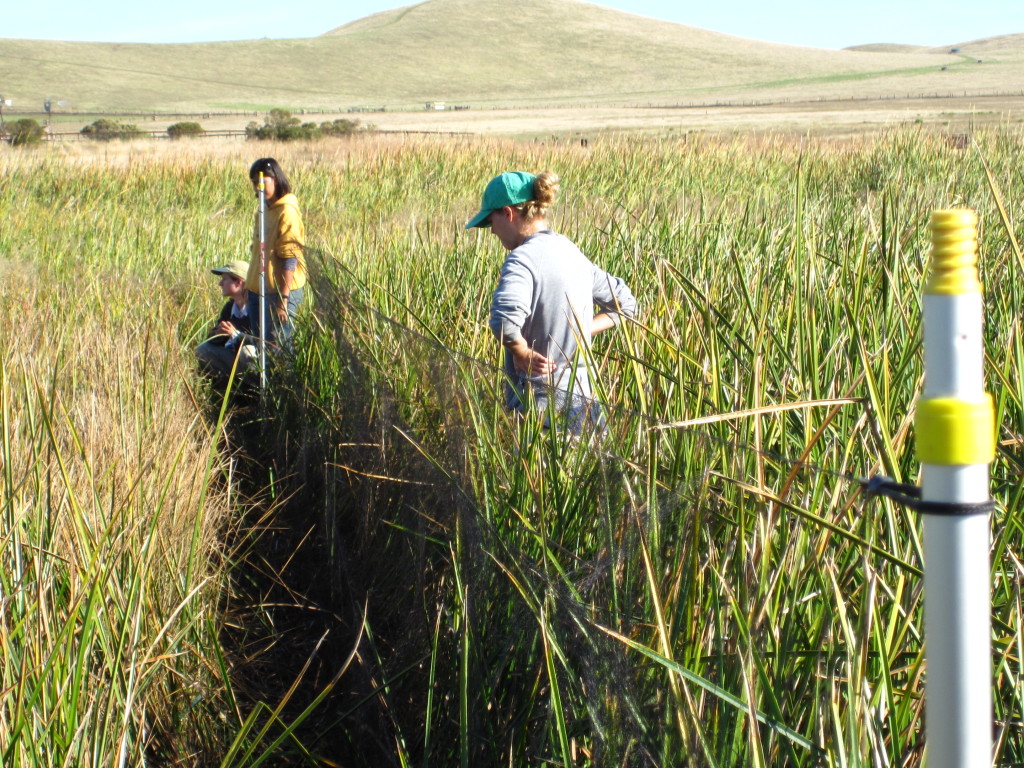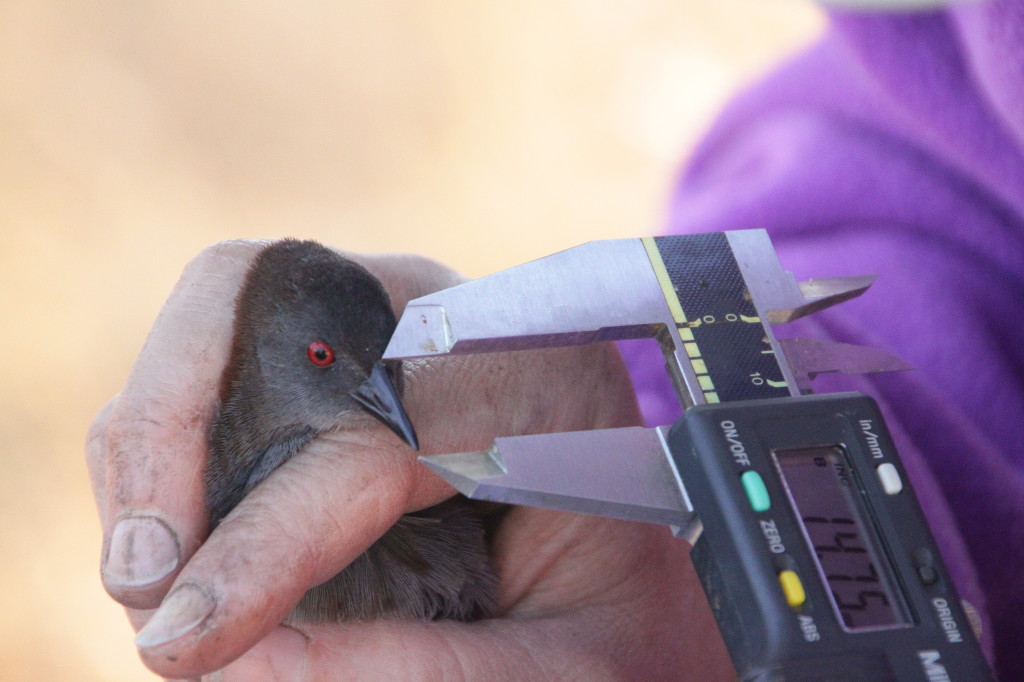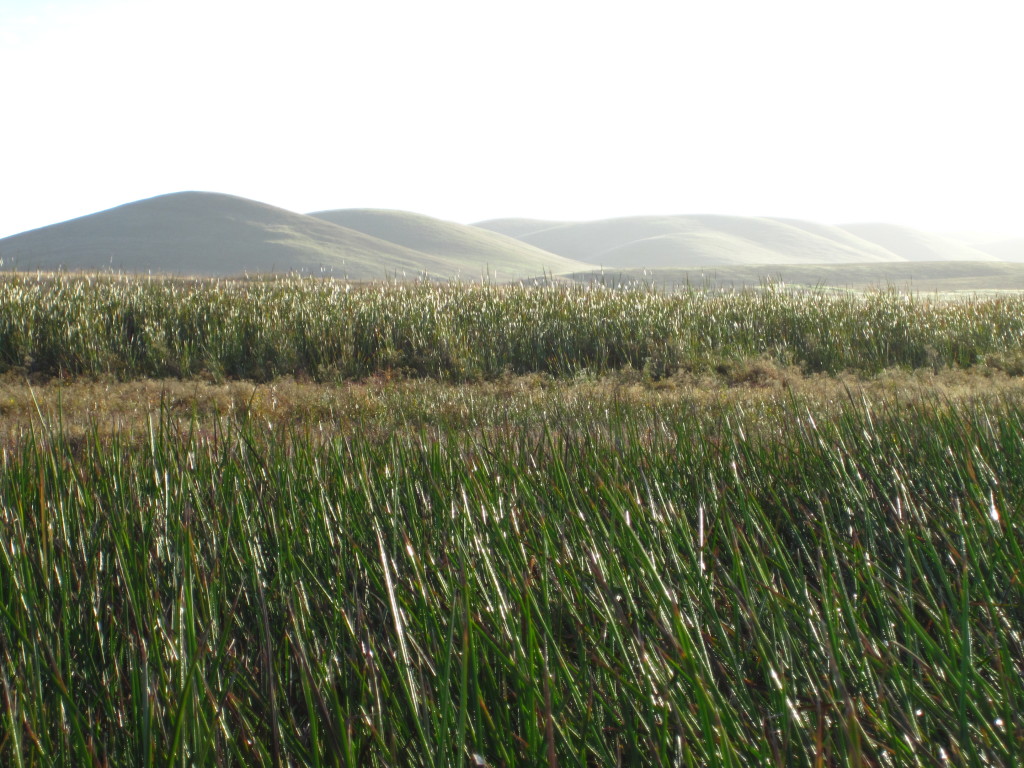Two summers ago, a black rail turned up dead under a wind turbine in the Delta.
The bird was probably whacked by the rotating blades, and while its death was a sad event, there was a scientific upside to it. The bird had been banded in the Sierra foothills and had traveled some 80 miles or so before meeting its maker. That’s a very long way for a species that in some ways acts more like a mouse than an animal with wings.
“That was really interesting. It’s not what we were expecting to find,” said Steven Beissinger, a conservation biologist at the University of California at Berkeley, whose research team banded the bird.
Black rails are an elusive bird, preferring to spend most of their time scurrying around marshes under tall vegetation. They are so hard to spot, in fact, that they’ve made it onto many a Life List. They are about a half-foot long, the smallest of the rail family, and mostly black, except for a brown collar and white speckles on the back.

Intentionally or not, the bird that was whacked by the wind turbine was headed toward its source population around the San Francisco Bay. Beissinger has been studying the species’ movements for more than a decade after the surprising discovery that this demure little bird had been quietly living, unbeknownst to Western settlers, in the Sierra foothills in small marshes created by irrigation canals and accidental leaks.
How black rails got there from the San Francisco Bay has been a bit of mystery. Beissinger’s team has been collecting blood and feather samples from banded birds and testing the DNA. They have determine that the Bay rails and the Sierra population diverged about a thousand years ago when the topography of the Bay Area looked very different than it does now.
“The Bay was underwater at some time, so one of the things we need to figure out is if some of these rails in the foothills were remnants of the birds that were in the Bay before the last flooding event,” Beissinger said.
The banded bird added certainty to what the genetic tests showed — black rails could, indeed, take to the skies for long distances.
An ideal spot
The Sierra foothills, specifically Nevada and Placer counties, turned out to be an ideal spot to research the black rail because the study areas are so discreet, only about half acre in size.
The study sites are scattered across private lands, many of them ranches. By comparison, in the Bay Area, black rails inhabit wetlands that are many thousands of acres (such as China Camp State Park, Napa-Sonoma Marsh, and the wetlands around Point Pinole Regional Shoreline). Only a few breeding pairs occupy each marsh site in the Sierra foothills.
“We could go to a lot of these sites and see how many of them are occupied by these rails, and we can go from one year to the next and see how many occupied ones remained occupied, or went locally extinct. And we can see new patches,” said Beissinger.

Whenever you ask a scientist how they go about their field work, you inevitably get an interesting story. Black rails are surely one the harder birds in the world to catch.
In the foothills, Beissinger’s team heads out during the day with nylon mist nets that they peg down into the soil. They clear a path in the vegetation heading directly at the net. Then they hide in the vegetation and play recorded rail calls in the hopes of luring a bird, who will hopefully try to defend its territory, into the net. They have caught 339 black rails this way.
“It really works,” said Laurie Hall, a PhD researcher who is part of Beissinger’s team. “They are hard to catch. I’m not going to lie. They are definitely a challenging species to work with.”
Black Rail ki ki krr Song:
Black Rail Growl Call


In the San Francisco Bay marshes, they use a different technique, rustling up birds at night with a marine spotlight and a rope that they drag through low-standing pickleweed.
“I get a lot of emails from birders wanting to come out and help me,” Hall said. “I’ve never had a problem finding volunteers. Any good PR for this species is a good thing.”
New insights into dispersal
The research is helping to provide insight into how a species can disperse under environmental stresses like climate change.
“Here’s a strange idea,” said Beissinger. “Maybe they’re a lot more mobile than we give them credit for. We see them walking around the ground all the time and they are not good fliers.”
In the San Francisco Bay, the genetics have shown that the South Bay and North Bay populations rarely mix, perhaps because the habitats are large enough to keep them happy in home territory. But the foothills rails easily move between patches of marshland as one spot dries up and a new spot is created. The banded bird found dead in the Delta had traveled farther than anyone had ever documented.
“They are capable of this flexibility in this lifestyle and that’s good news,” said Hall. “Especially when we talk about sea level rise and the redistribution of wetland habitat in the Bay Area. I think the story of black rails is going to be a good one. It’s a viable population even in the face of climate change.”

Other marsh species, such as the endangered salt marsh harvest mouse, may act a lot like black rails day-to-day, but will struggle much more to disperse into new habitat if theirs is submerged in seawater.
“If there is not a direct link from one wetland to another, they may not be able to get there,” said Hall. “Birds can fly but a mouse has to crawl to the next habitat patch. It’s a huge mortality problem for them.”
But if black rails, one of the more stationary birds in the world, can pick up shop and move, presumably that’s an indication that more mobile shorebirds like heron and the endangered clapper rail can do so too. However, there is a major caveat. Upland marsh habitat must be there for them, but so often the marshes around the Bay are boxed in by development.
“They are capable of moving, but we have to make sure the habitats are going to be there,” she said. “We have to protect the spaces up slope of these habitats so new habitats are created as sea level rises.”
Here’s where you can read more about the black rail project.
Alison Hawkes is the online editor at Bay Nature.





